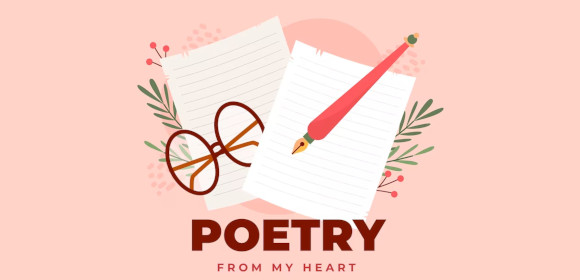30+ Slam Poetry Examples to Download
In the realm of expressive arts, poetry has long been a medium for individuals to convey their emotions, thoughts, and perspectives in a deeply impactful manner. One exciting and vibrant form of poetry that has gained immense popularity in recent years is slam poetry. This dynamic and engaging genre merges the art of spoken word with passionate performance, creating an electrifying experience for both poets and audiences. In this article, we’ll delve into the essence of slam poetry, explore the steps to crafting your own masterpiece, and highlight some compelling slam poetry examples that have left an indelible mark on the stage.
1. Slam Poetry Example
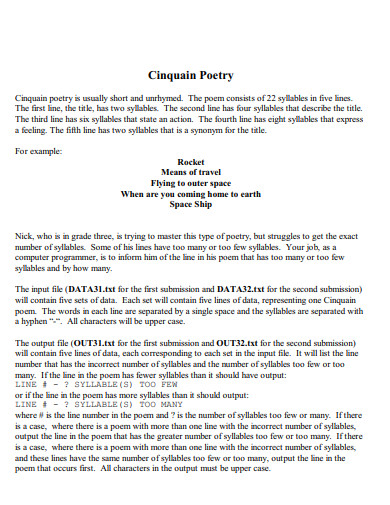
archives.berklee.edu
2. Slam Poetry Worksheet Example
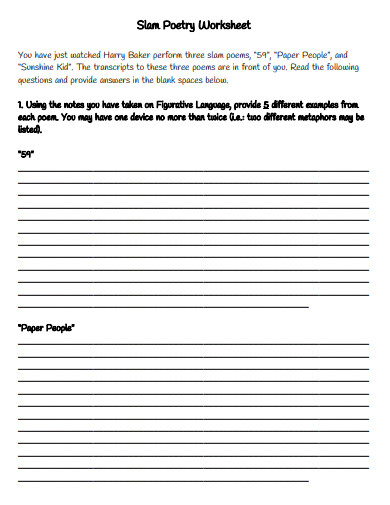
web1.nbed.nb.ca
3. Slam Poetry Assignment Example
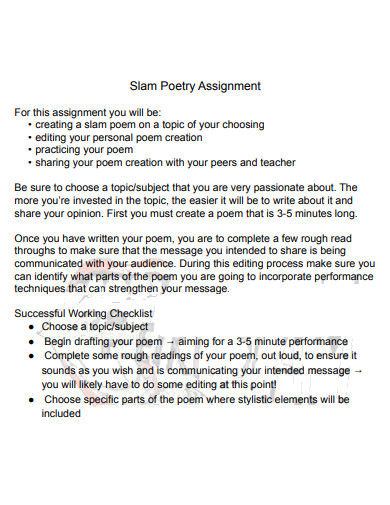
online.mhjc.school.nz
4. Poetry Slam Audition Form Example
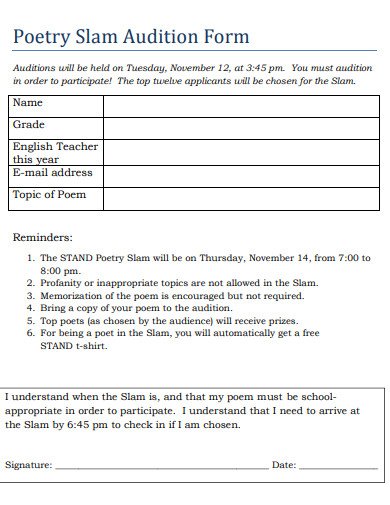
wsfcs.k12.nc.us
5. Slam Poetry Lesson PLan Example
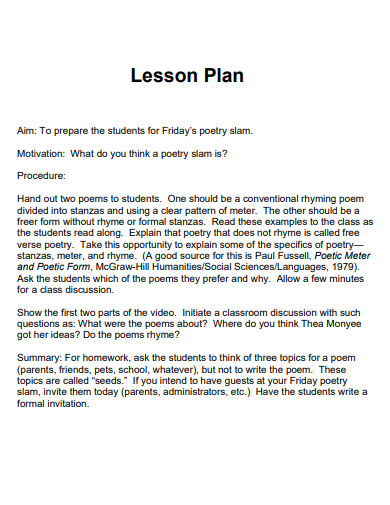
choicesvideo.net
6. Poetry Slam Winner Review Example
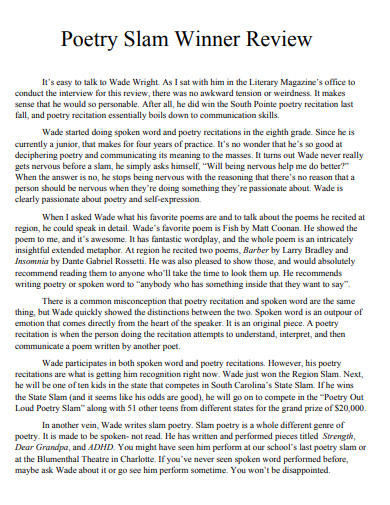
sc.edu
7. Poetry Slam Rubic Example
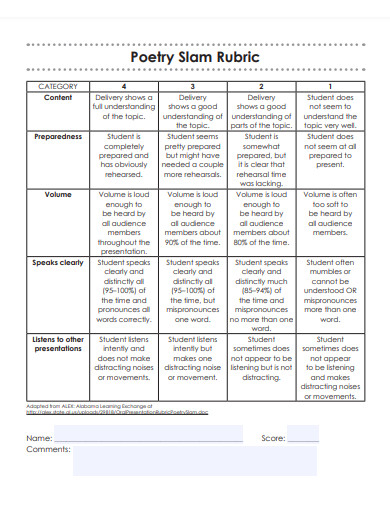
readwritethink.org
8. Poetry Slam Topics Example
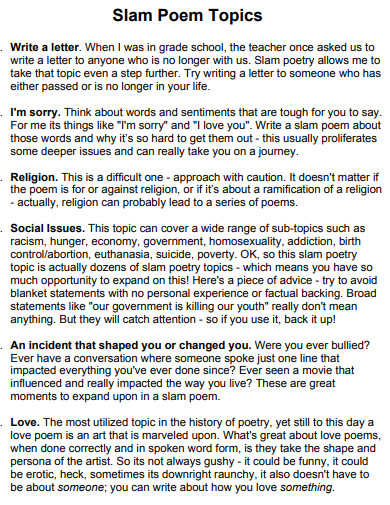
blogs.ubc.ca
9. Youth Poetry Slam Example
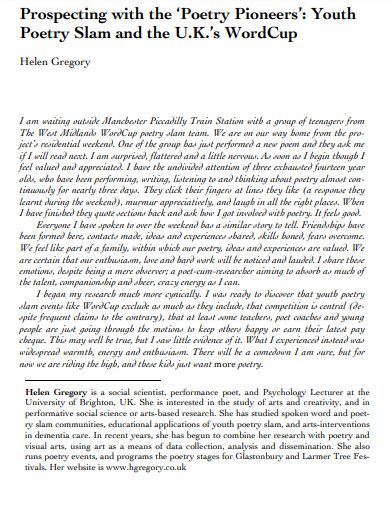
cris.brighton.ac.uk
10. Research Questions Poetry Slam Example
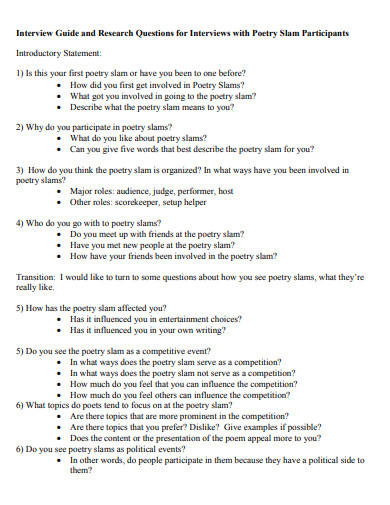
api.mountainscholar.org
11. Poetry Slam Transcripts Example

creatingculturalcompetencies.org
12. Poetry Slam Example
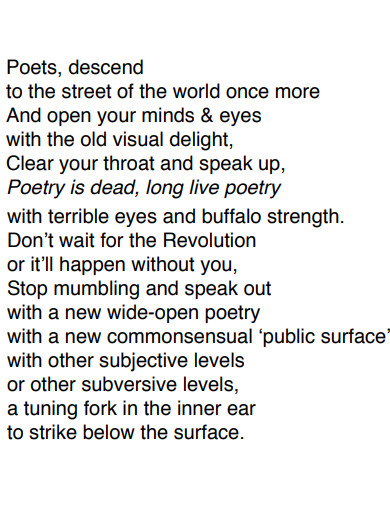
escholarship.org
13. Poetry Slam Structure Example
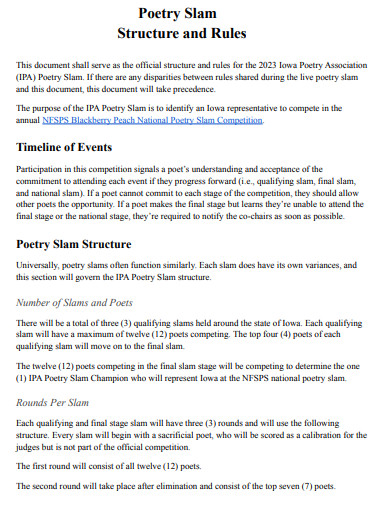
iowapoetry.com
14. Love Poetry Slam Example

scholarworks.umt.edu
15. Running Poetry Slam Example
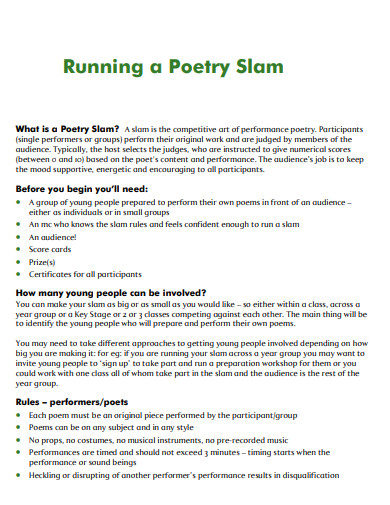
readingagency.org.uk
16. Poetry Slam Evaluation Example

fortbendisd.com
17. Case for Poetry Slam Example
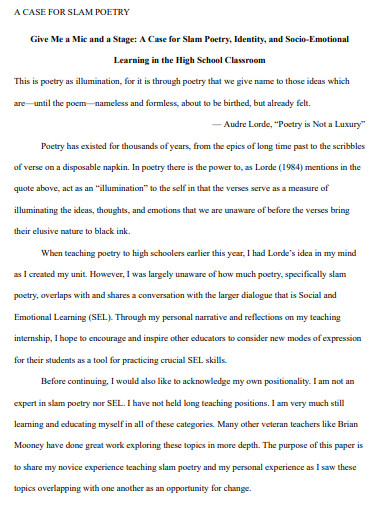
cedar.wwu.edu
18. Deep Poetry Slam Example
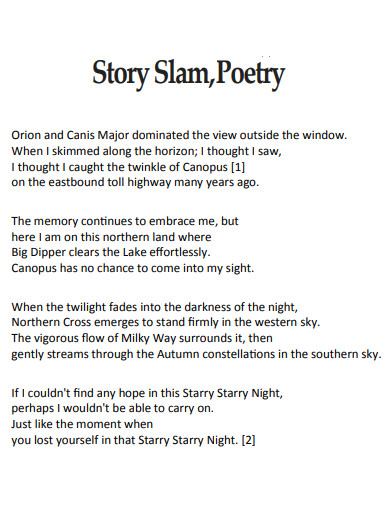
thorpevineyard.com
19. Rise of Poetry Slam Example
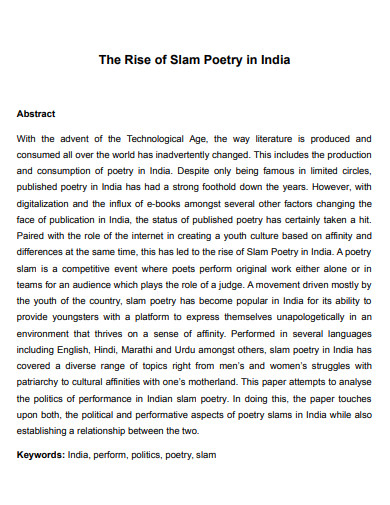
researchgate.net
20. Simple Poetry Slam Example
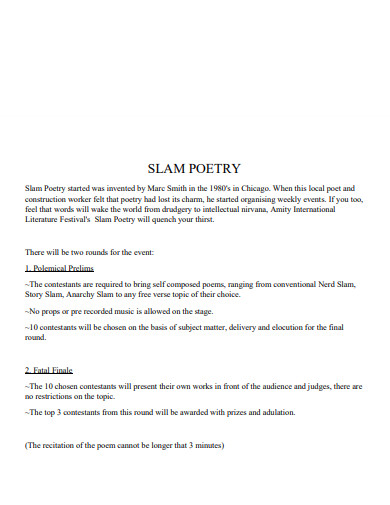
amity.edu
21. Poem Slam Example

core.ac.uk
22. Summer Poetry Slam Example

warden-house.kent.sch.uk
23. How To Use Poetry Slam Example
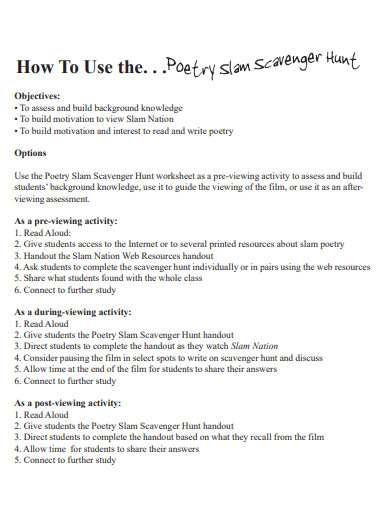
fod.infobase.com
24. Introduction to Poetry Slam
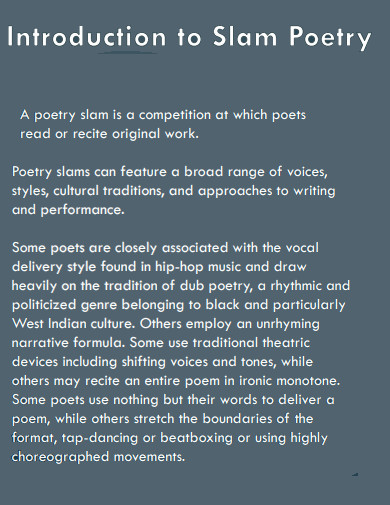
img.nordangliaeducation.com
25. Poetry Slam Plan Example
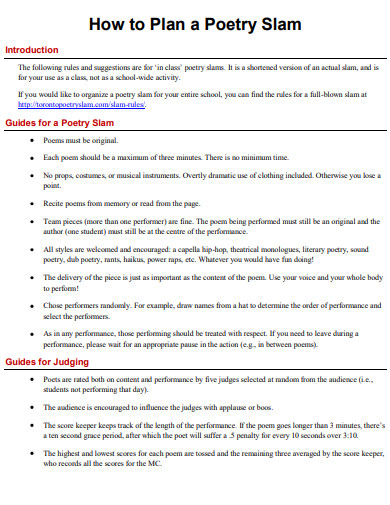
rcboe.org
26. Poetry Slam and Cultural Experience Example
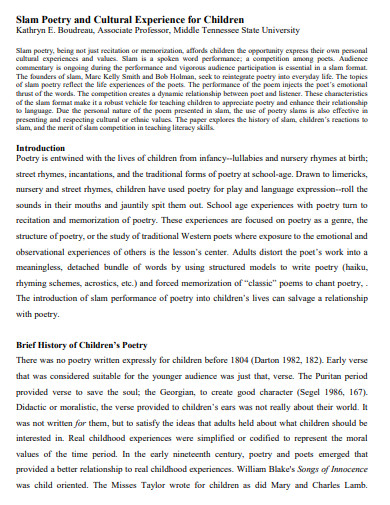
files.eric.ed.gov
27. Middle School Poetry Slam Example
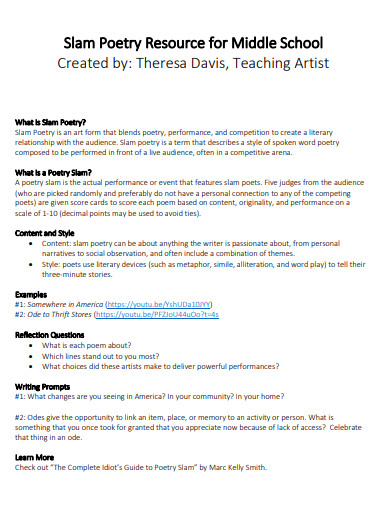
alliancetheatre.org
28. General Poetry Slam Example
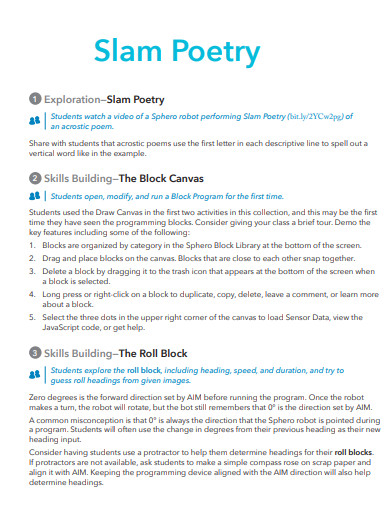
sphero-media-sphero-prod.s3.amazonaws.com
29. Free Poetry Slam Example

scholastic.com
30. Workshop Poetry Slam Example
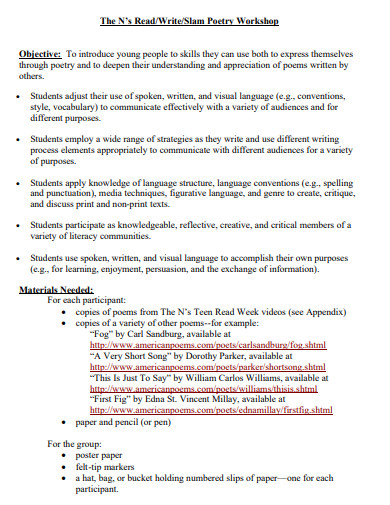
ala.org
31. College Poetry Slam Example
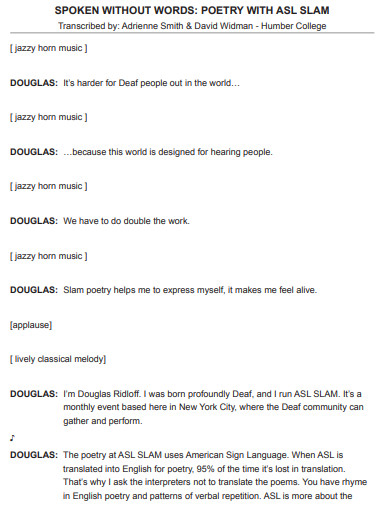
humber.ca
What is Slam Poetry?
Slam poetry is a captivating genre that blends the power of spoken word with the intensity of performance. Unlike traditional poetry, which is often read silently, slam poetry is intended to be performed in front of an audience. The goal is to convey emotions, ideas, and perspectives with a heightened sense of urgency and authenticity. This genre originated in the 1980s, evolving as a competitive event where poets would present their work in a competitive setting, and judges would score their performances. While the competitive aspect remains, slam poetry has also become a platform for social commentary, self-expression, and artistic exploration.
How to Write Slam Poetry
Creating impactful slam poetry requires more than just words on a page. It demands a keen understanding of tone, theme, literary devices, and the art of performance. Here’s a step-by-step guide to help you harness the essence of slam poetry and compose a piece that resonates deeply with both you and your audience.
Step 1: Choosing a Theme and Message
Begin by selecting a theme or message that holds personal significance. Whether it’s social justice, identity, love, or any other topic, a strong theme provides a backbone for your poem. Consider the emotions you want to evoke and the message you want to convey. This will guide the tone and direction of your slam poem.
Step 2: Crafting Compelling Language
Incorporate literary devices like metaphors, alliteration, and imagery to add depth and creativity to your poem. These elements amplify the impact of your words and engage the audience’s senses. Craft lines that not only convey your message but also captivate listeners with their linguistic beauty.
Step 3: Establishing an Engaging Structure
Structure plays a crucial role in slam poetry. Experiment with stanza breaks and line lengths to create rhythm and pacing. Break free from conventional forms, but maintain a structure that complements your message. This is where your poem’s context and tone come into play, guiding the arrangement of your words on the page.
Step 4: Infusing Authenticity and Performance
Slam poetry is about more than reciting words; it’s about embodying the emotion behind them. Practice your performance to synchronize your gestures, voice modulation, and facial expressions with the words. Inject genuine emotion and passion into your delivery, allowing your poem to resonate deeply with your audience.
FAQs
Is slam poetry only about competition?
While slam poetry did originate as a competitive event, it has evolved beyond that. Today, it’s a platform for artistic expression, social commentary, and personal exploration. Competitions still exist, but many poets perform purely for the art’s sake.
Can I use clichés in slam poetry?
While clichés are generally discouraged in creative writing, they can be used in a deliberate and impactful way in slam poetry. Subvert expectations by using clichés in unexpected contexts to create a thought-provoking effect.
How can I convey a strong theme in my slam poem?
To convey a strong theme, focus on imagery, metaphors, and anecdotes that align with your theme. Paint vivid pictures with your words, allowing the audience to connect emotionally to the underlying message.
Slam poetry is a potent art form that melds language, performance, and emotion into a captivating tapestry. By following the steps outlined in this guide, you can craft your own slam poetry masterpiece, allowing your voice to reverberate through the hearts of your listeners. From raw emotions to social critique, slam poetry empowers individuals to share their stories, passions, and perspectives with an electrifying fervor, leaving an indelible impact on both the stage and the soul.


